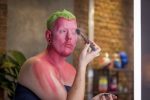Everyone would love to wake up to beautiful and feel confident when looking at their bare face. But with problems like rosacea, blackheads, eczema or cystic acne, the journey to better-looking skin can be both laborious and expensive.
With thousands of products on the market that claim to be miracle workers, it can be difficult to weed out the best ones for your skin. Building a skincare routine almost always involves trial and error and perhaps some serious mistakes before finally finding a steady regimen that keeps the issues at bay.
1. What to Avoid in Skin Products
Many of the skincare and beauty products marketed today are not suited for the delicate outer layer of the body. Artificial chemicals integrated by manufacturing companies can do more harm than good, causing irreversible damage in some extreme cases.
Minimizing the number of man-made ingredients that get absorbed into your skin is one of the best ways to keep a healthy, youthful glow. Be sure to read the ingredients on every beauty product and scan for possibly harmful chemicals that may be lurking.
Parabens: These synthetic chemicals are often added to consumer products as preservatives or antibacterial agents. In a study done by the National Center for Biotechnology Information (NCBI,) parabens were detected in 10 out of the 11 samples used in the experiment. Like many other harmful ingredients on this list, parabens are endocrine-disrupting compounds, or EDCs, and have effects on reproductive health, the nervous system and metabolism.
Fragrances: Many seemingly natural fragrances seen in certain products are artificially synthesized. Substances that are added to products for a desired scent or to mask other natural scents may have 50-300 different chemicals, many of them synthetic and harmful. Synthetic fragrances in perfumes and other personal care products were found to be associated with dermatitis, asthma and headaches.
UV filters: Although many of them are organic compounds, UV filters contain chemicals such as BP3 and benzophenone, which can lead to breast cancer because of their estrogenic properties. These chemicals can be found in sunscreens, lotions and many other personal care products. However, fear not: there are alternatives that will protect your skin without all the collateral damage, zinc oxide being one of them.
2. What to Use for Oily Skin
Oily skin can be both a blessing and a curse: the moisture that oily skin locks in can prevent premature aging and dryness, but it can also lead to acne.
Apple Cider Vinegar: The use of vinegar to heal infections was used as early as 377 BC. Diluted apple cider vinegar in toners and other solutions kills pathogens and bacteria that could cause acne, and the acidity of it helps balance the skin’s pH.
Clay: Kaolin is a naturally occurring substance that helps to reduce the production of excess oil and mattify skin and is often found in clay masks that both unclog pores and relieve skin of its oiliness. However, make sure to be gentle and apply these masks only every once in a while, since they can severely dry out the skin if used too frequently.
Salicylic acid: A natural ingredient found in willow bark, salicylic acid is one of the best cleansing solutions for ridding skin of oils. It was also proven to be more effective than benzoyl peroxide, an antimicrobial chemical used to treat acne.
Tea tree and eucalyptus oils: Both found in nature, tea tree and Australian eucalyptus oil remove acne-causing bacteria on the skin, producing similar results as benzoyl peroxide but with fewer side effects. However, in rare cases these oils can be irritating to hypersensitive skin, so make sure to test these products on another part of the body (wrist, neck, etc.) before applying them to your face.
3. What to Use for Dry Skin
Dry skin can be hereditary, and is caused by the environment or the simple lack of moisture in the skin. Natural ingredients provide hydrating but not overly greasy moisture to dry skin, so knowing which products to reach for is crucial.
Non-fragrance plant oils: Olive oil was proven to reduce the signs of stressed, dry skin and promote the re-growth of the skin barrier. Borage seed, argan, primrose, sunflower and cranberry oils all moisturize dry skin in addition to having antioxidant properties.
Shea butter and other plant butters: Shea butter, coconut butter and jojoba butter also have antioxidant properties that protect the outer layer of skin from the harsh environment. They also contain different types of fatty acids that replenish the skin and protect it from damage.
Ceramides: Skin is naturally composed of 50 percent ceramides, which control moisture loss and retain hydration. Using them in skincare products will help your face lock in its moisture and prevent it from getting dry. Be sure to look for ceramides derived from plants like wheat germ rather than synthetic ones.
An additional obstacle to choosing the correct products for your face is that everyone’s skin is unique and there is no “standard” set of ingredients to treat every type. It is best, then, to learn which ingredients work best for curing your unique skin concerns and look for them in the skincare and beauty products that you buy.
Most importantly, though, confidence is the key to loving your skin. Before even embarking on your skincare journey, it is vital to accept the way your skin looks and not to see it as a reflection of your character. While your skin is what everyone sees first, it is also working hard every day acting as a shield for your body, so be sure to love and care for it.
















